
Cave No. 9 and No. 10 is a double cave; if seen from outside, it has both a front chamber and rear chamber. Double caves in Northern Wei Dynasty can be traced back to Dowager Feng. The widow took charge at an early age of 24, and oversaw an age of suppression. For 25 years, the empire was held by two "saint" rulers. Therefore, double caves were built to honor these two "saints."
On the north wall of the front chamber in Cave No. 10 is a relief sculpture of Sumeru, the mountain that stands in the center of the world, according to ancient Indian mythology. Some 5 meters by 2 meter, carvings include children, deer-like animals, double dragons, the Indian monk Kumarajiva and Deva Asura. On the ceiling of a window over the group sculpture is a blossoming double-petal lotus; as if the shining sun, surrounded by flying deities.
Cave No. 7-8
These two caves form the earliest double cave in Yungang, where cultures from the east and India to the west harmoniously set against and embrace each other.
Inside the arch door to Cave No. 8, on the east wall is a relief sculpture of Indian Shiva Mahesvara. Riding on the sacred ox, the three-headed deity holds the sun, and a bow and arrows in his eight hands. On the opposite side is his son, Kumara, with five heads and six hands riding a peacock. The sculptures illustrate how the Yungang Grottoes borrowed and artistically combined elements from different religions and areas.
On the south wall inside Cave No. 7, over an arch door, is a rectangular curtain-shaped shrine, featuring six plump donors in flowing robes. These six donors were extolled by Liang Sicheng - the "Father of Modern Chinese Architecture" - as "the six beauties in Yungang," for their elegant shapes and enchanting smile.
The double cave also features early period flying deities with bright smooth foreheads, round buns and drifting dresses.
Posing in a deep-V, the deities looks cute in an endearingly clumsy way.
If you go
How to get there:
There's one and only direct flight from Shanghai Pudong Airport to Datong Yungang Airport. Trains running through Shandong and Shanxi provinces, Beijing and Tianjin municipalities and Inner Mongolia Autonomous Region all stop by Datong. Take Bus No. 4, 26, 28 and 17 to Xinkaili Bus Station and change to Bus No. 3 that runs directly to Yungang Grottoes.
Travel tips:
The scenic area is open every day from 8:30am to 5pm. Entrance fee is 150 yuan (US$24), with half price admission for students and the over-65s. Tour guides charge 120 yuan, or you can rent an electronic tour device for 100 yuan. This gives detailed explanations in English, French and Japanese.

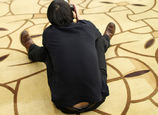

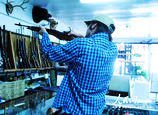
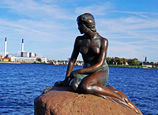


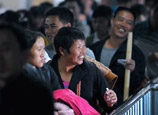


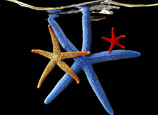






 Photo story: The art of food, the art of life
Photo story: The art of food, the art of life


![]()
